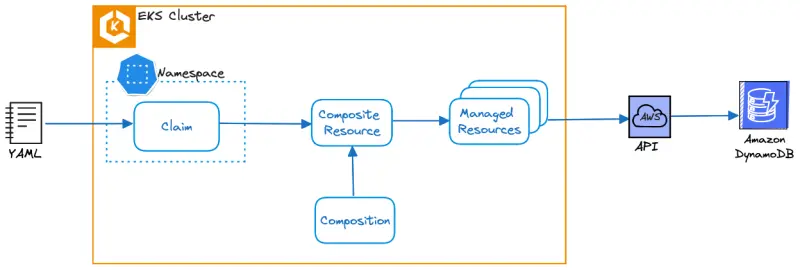How it works
Running Crossplane in a cluster consists of two main parts:
- The Crossplane controller which provides the core components
- One or more Crossplane providers which each provide a controller and Custom Resource Definitions to integrate with a particular provider, such as AWS
The Crossplane controller, Upbound AWS provider and have been pre-installed in our EKS cluster, each running as a deployment in the crossplane-system namespace along with the crossplane-rbac-manager:
NAME READY UP-TO-DATE AVAILABLE AGE
crossplane 1/1 1 1 3h7m
crossplane-rbac-manager 1/1 1 1 3h7m
upbound-aws-provider-dynamodb-23a48a51e223 1/1 1 1 3h6m
upbound-provider-family-aws-1ac09674120f 1/1 1 1 21h
Here, upbound-provider-family-aws represents Crossplane provider for Amazon Web Services (AWS) developed and supported by Upbound. upbound-aws-provider-dynamodb is a subset of the prior dedicated to deploy DynamoDB via Crossplane.
Crossplane provides a simplified interface for developers to request infrastructure resources via Kubernetes manifests called claims. As shown in this diagram, claims are the only namespace-scoped Crossplane resources, serving as the developer interface and abstracting away implementation details. When a claim is deployed to the cluster, it creates a Composite Resource (XR), a Kubernetes custom resource representing one or more cloud resources defined through templates called Compositions. The Composite Resource creates one or more Managed Resources which interact with the AWS API to request the creation of the desired infrastructure resources.
